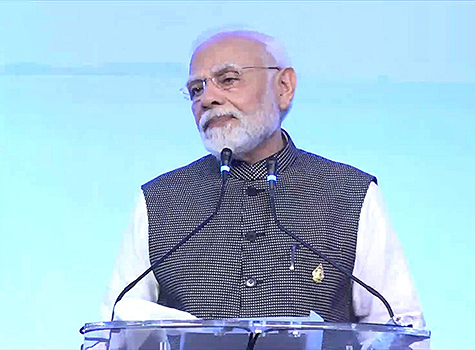That’s what everybody wants, right? It’s the number one goal on most New Year’s Resolution lists.
And it’s a good goal to have. Managing our weight is a matter of urgency. After smoking, obesity is now the leading lifestyle risk factor for eleven cancers, including colorectal, pancreatic and postmenopausal breast cancer. In our South Asian population, extra weight is also a high risk factor for diabetes and heart disease.
So we know that we need to lose weight if our BMI is greater than 24. But how do we do it? What is the best strategy?
Blogs, websites, chat rooms, facebook groups, and magazines are filled with all sorts of tricks and tips imaginable. Everyone has an opinion about the fastest method to melt away the pounds. Every week some new diet claims to make weight loss faster and easier than ever before! Some of these might result in short-term weight loss, but many are difficult to follow long-term, have arbitrary rules, and may actually do more harm than good.
Here is a list of fad diets to avoid:
• The Alkaline Diet: The recommendations for this diet are good but for all the wrong reasons. There is no research proving that pH affects our weight. Our body is incredibly efficient at keeping our pH levels stabilized.
• The Blood Type Diet: There is no relationship of blood group to diet, and may cause unnecessary restrictions.
• The Five Bite Diet: Eat whatever you want—but only five bites of it. This is a very low calorie restrictive diet and will cause your body to go into a starvation mode and slow down your metabolism rather than help you lose weight. Plus it is not sustainable for long term. You can gain back all the weight you lose, once you start eating more than five bites.
• Master Cleanse/ 10 Day Green Smoothie Cleanse/Juice Plans/Liquid Diets: Overly restrictive, impractical and not sustainable. You will gain back all the weight once you eat solid food. An extreme low calorie diet can cause muscle loss which is not what you want your body to lose.
• One Ingredient Diet, for example, Cabbage Soup Diet or Grapefruit Diet: Same reason as above.
• The HCG Diet: This diet limits you to about 500 calories a day while taking human chorionic gonadotropin (HCG), a hormone that is marketed as an appetite suppressant. However, there’s no evidence that HCG does more than act as a placebo. The weight loss happens only due to the extreme calorie restriction. Though a health care provider may legally give you HCG injections, they’re typically used to treat fertility issues in women and the FDA has not approved them for weight loss. Keep in mind that over-the-counter products with HCG are illegal.
• Other diet plans that continue to be popular include the Military Diet, The HMR Diet, Bulletproof Diet, Whole30, Paleo Diet, High Protein Low Carb Diet, No Grains Diet, and a variety of fasting regimens.
Life is already complicated enough. Limiting food choices or following rigid meal plans can add extra stress. With any new diet, always ask yourself: “Can I eat this way for the rest of my life?” If the answer is no, the plan is not right. Never think of yourself as going on a “weight loss diet”. Instead, think long-term. Your diet should address any medical issues you may have and help improve your overall health.
Losing Weight the Healthy Way: Calorie Density
Calorie density is the simplest approach to healthful eating and lifelong weight management. This common sense approach makes it possible for you to lose weight without feeling deprived. It allows more food for fewer calories, and is easy and practical. By following the principles of calorie density, you will also increase the overall nutrient density of your diet, which helps in reducing risks for chronic diseases.
Research has shown that we tend to eat about the same weight of food every day. Try these small, simple techniques to lower the calorie density of your meals, and you’ll wind up eating the same amount of food that satisfies you – with far fewer calories:
1. Enjoy Soup and Salad First
Start your meal with a broth-based vegetable soup or salad with vinaigrette dressing to fill you up so you have less room for high-calorie foods.
2. Cut the Fat
Fat is calorie-dense. Fat has 9 calories per gram versus 4 calories for protein and carbohydrates. Adding fat and oil will always raise the overall calorie density of a meal. Use low fat dairy and lean meats. Limit the amount of oil used in cooking. Avoid fried foods and packaged snacks made with hydrogenated fats. Use reduced-fat cooking methods, such as microwaving, steaming, stewing, baking and roasting.
3. Pile on the Vegetables and Fruits
Vegetables are the lowest in calorie density. Therefore the surest, quickest way to lower the calorie density of your meals is to add vegetables. Make half of your plate vegetables. This can be soup, salad, cooked vegetables or a combination. Eat veggies with hummus as a snack. Add vegetables to whatever you are cooking to make the dish lighter.
4. Rethink Your Drink
• Don’t drink your calories. Avoid soda and sugary beverages.
• Make sure you are drinking enough water.
• Diet drinks with artificial sweeteners may not have any calories, but research shows that these beverages increase belly fat and cause insulin resistance.
• Avoid shakes and smoothies for all your meals and make sure to eat and chew your food well. The process of chewing our food is important for our health. When we chew, the mouth releases saliva which contains many enzymes. These enzymes work with food in producing certain chemicals such as nitric oxide, sulforaphane, etc, that have been proven to prevent cancer, heart disease, brain disease and obesity.
5. Practice Mindful Eating
Eat small balanced meals at regular intervals.
Don’t starve yourself.
Don’t have long gaps between meals.
Don’t stuff yourself.
Avoid mindless snacking.
There are a variety of foods that create a negative-calorie effect, which improves your metabolism and helps you lose weight effectively. These foods are usually high in water content and rich in fiber. Include a variety of whole grains, legumes, vegetables, and fruits.
Since your body takes a longer time to burn off fibrous foods, your metabolism continues to stay revved up, giving you a jumpstart to your weight loss. Wishing you all a Happy Healthy New Year!
— Parul Kharod, MS, RD, LDN is a registered dietitian and licensed nutritionist and works as a Clinical Dietitian with Outpatient Nutrition Services at WakeMed Hospital in Cary and Raleigh. She can be reached at [email protected]
Posted: Monday, January 2, 2017



